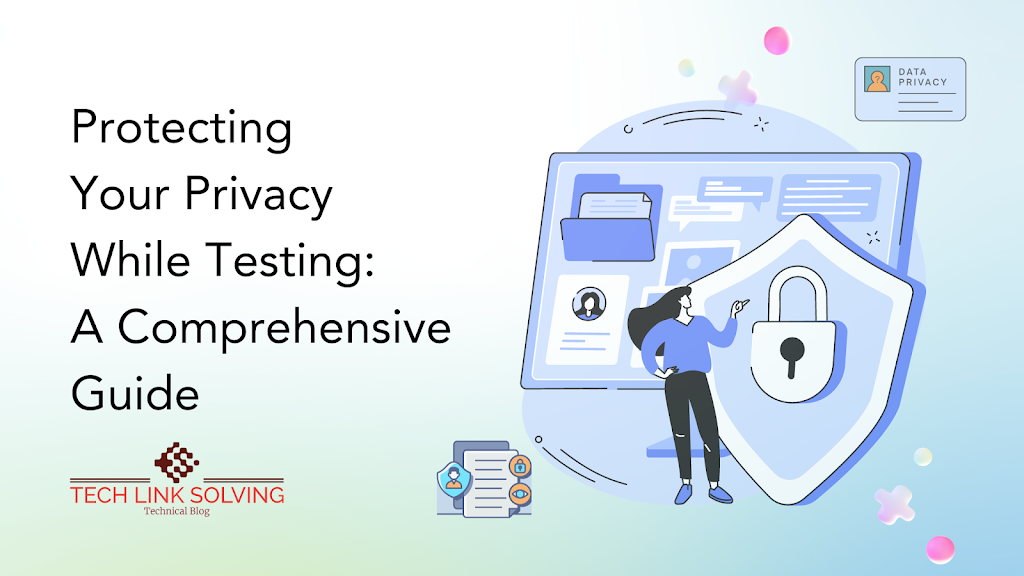In an age where technology continues to advance at an unprecedented pace, our lives have become increasingly intertwined with digital platforms and applications. From online shopping to social media, we leave a trail of personal information that is susceptible to data breaches and privacy infringements. One area where privacy concerns often arise is during software and app testing. This article will explore the importance of protecting your privacy while testing and provide practical steps to safeguard your personal data.
Table of Contents
- Introduction
- Understanding the Privacy Risks in Testing
- Data Exposure
- Unauthorized Access
- Third-Party Risks
- Best Practices for Protecting Your Privacy
- Use Temporary Email Addresses
- Employ VPN Services
- Be Cautious with Personal Information
- Choosing Secure Testing Environments
- Trusted Testing Platforms
- Local Testing Environments
- Secure Testing on Mobile Devices
- App Permissions
- Data Backup and Recovery
- Data Encryption: Your Ultimate Shield
- Staying Informed About Privacy Policies
- Reviewing Privacy Policies
- Opting Out of Data Collection
- The Importance of Regular Updates
- Safe Testing for Developers
- Isolating Test Environments
- Reducing Data Use in Testing
- Privacy Testing Tools
- Conclusion
- FAQs
Introduction
As the digital landscape evolves, more individuals and businesses engage in software and app testing to ensure a seamless user experience. However, this process can pose risks to your privacy, as sensitive information may be exposed or misused. In this article, we will delve into the various aspects of protecting your privacy while testing and provide actionable tips to keep your personal data secure.
Understanding the Privacy Risks in Testing
Data Exposure
During testing, you may unknowingly share personal information such as email addresses, usernames, or even credit card details. This data exposure can lead to identity theft or other malicious activities.
Unauthorized Access
Test environments are not always as secure as production environments, making them susceptible to unauthorized access. Protecting your privacy also involves preventing unwanted intrusion.
Third-Party Risks
When using third-party testing services, your data may be shared with external entities, potentially compromising your privacy. Understanding how third parties handle your data is crucial.
Best Practices for Protecting Your Privacy while testing
Use Temporary Email Addresses
Consider using disposable email addresses when signing up for testing services. This way, your primary email remains untouched, and you can easily discard the temporary one.
Employ VPN Services
A Virtual Private Network (VPN) can add an extra layer of security by masking your IP address and encrypting your internet connection, making it harder for anyone to trace your online activities.
Be Cautious with Personal Information
Limit the amount of personal information you provide during testing. Only share what is necessary, and avoid sharing sensitive data unless absolutely required.
Choosing Secure Testing Environments
Trusted Testing Platforms
Opt for well-established testing platforms that have a proven track record of prioritizing user privacy and data security.
Local Testing Environments
Consider using local testing environments that are not connected to the internet to minimize the risk of data exposure.
Secure Testing on Mobile Devices
App Permissions
Review and restrict app permissions on your mobile devices. Only grant access to necessary functions to prevent excessive data sharing.
Data Backup and Recovery
Regularly back up your mobile device’s data to ensure you can recover it in case of data loss during testing.
Data Encryption: Your Ultimate Shield
Utilize encryption tools to protect your data during testing. Encryption scrambles your data, making it unreadable to unauthorized parties.
Staying Informed About Privacy Policies
Reviewing Privacy Policies
Thoroughly read and understand the privacy policies of the testing services you use. Ensure they align with your expectations for data protection.
Opting Out of Data Collection
Check if testing services offer opt-out options for data collection. Choose services that respect your preference for minimal data sharing.
The Importance of Regular Updates
Keep your devices and software up to date. Updates often include security patches that can protect you from known vulnerabilities.
Safe Testing for Developers
Isolating Test Environments
Developers should create isolated test environments that do not have access to sensitive production data.
Reducing Data Use in Testing
Minimize the use of real data for testing purposes whenever possible, using anonymized or synthetic data instead.
Privacy Testing Tools
Explore privacy testing tools that can help you identify and rectify potential privacy issues in your apps and software.
Conclusion
In the digital age, protecting your privacy during testing is paramount. By following the best practices outlined in this article, you can enjoy the benefits of testing without compromising your personal data. Safeguard your information, stay informed, and embrace the power of encryption to ensure a secure testing experience.
FAQs
- Is it safe to use my real email address for testing purposes?
- It’s advisable to use a temporary or disposable email address for added security.
- Do all VPNs provide the same level of privacy protection?
- No, VPNs vary in their capabilities. Choose a reputable VPN service with a strong privacy policy.
- What should I do if I suspect a data breach during testing?
- Immediately report the breach to the testing service and take steps to secure your accounts and data.
- Can I trust all testing platforms with my data?
- No, always research and choose well-established and trusted testing platforms.
- How often should I review privacy policies for testing services?
- Regularly check for updates and review privacy policies whenever you use a new testing service.
By following these guidelines, you can navigate the world of software and app testing with confidence, knowing that your privacy remains a top priority.






